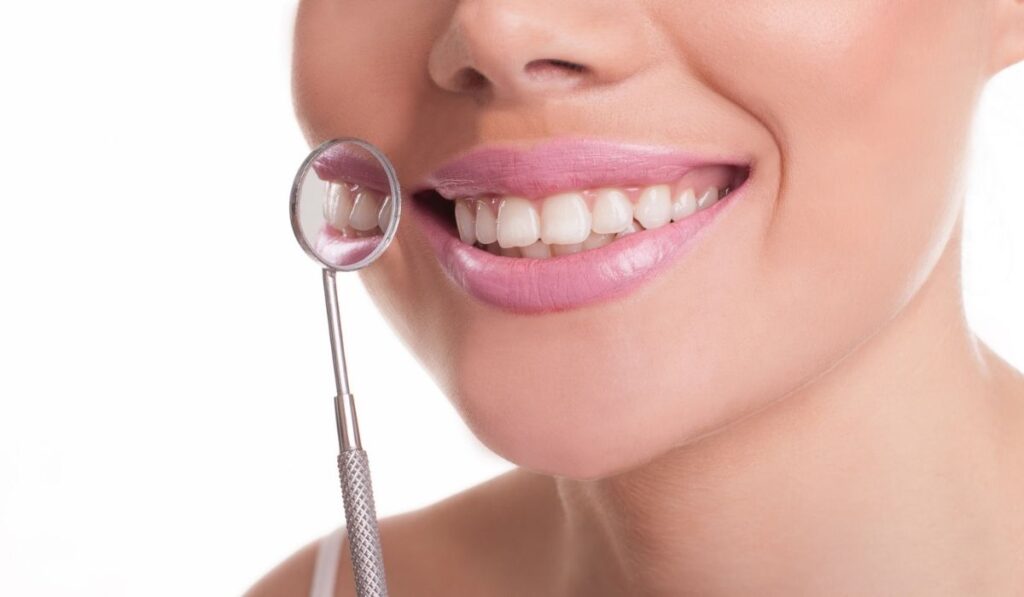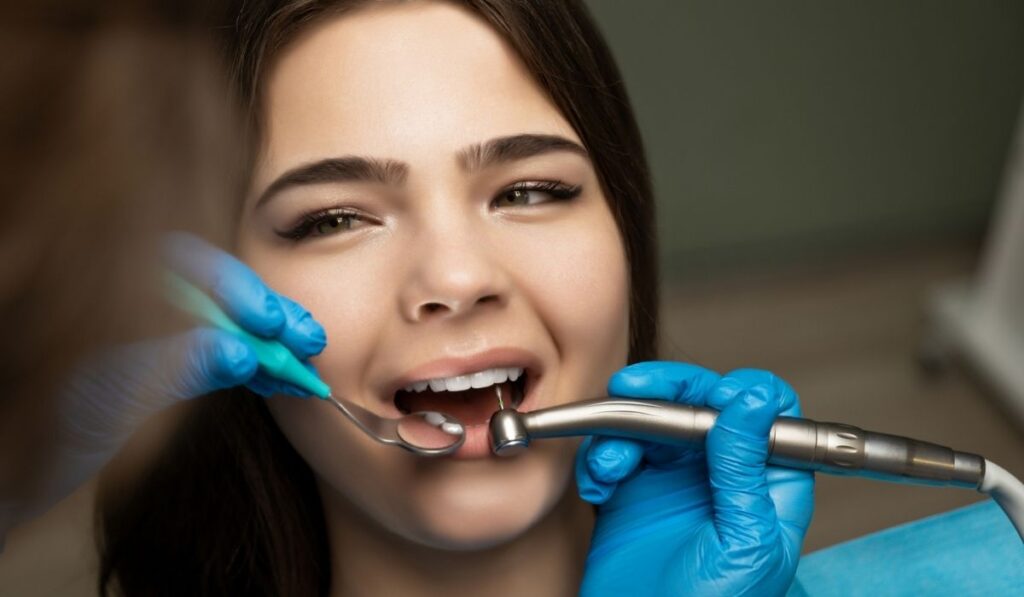Translucent teeth can not only affect their overall appearance but also cause a lot of damage. Having translucent teeth is a sign of a dental issue and should be treated as soon as possible. But what causes teeth to look see-through?
Translucent teeth can occur from enamel erosion that has occurred due to acidic food or drinks — or certain medical conditions that lead to weak enamel and frequent vomiting. There are methods of repairing this, such as composite bonding or veneers, but good oral hygiene can prevent wear.
There are several reasons why teeth might look translucent, and there are several treatment options as well. If you’ve noticed that your teeth are translucent and want to save your teeth from further damage, you’re in the right place. Let’s learn all about teeth translucency, its causes, treatments, and prevention!
Why Can I See Through My Teeth?

Sometimes the edges of your teeth can appear to be translucent or see-through. The reason is that the enamel at the edges of your teeth has started to erode. Along the edges of your teeth, only enamel is present, while dentin (the second layer of teeth) doesn’t extend down to the edges.
Therefore, it is easy to see that translucent teeth have resulted from enamel erosion.
Enamel erosion isn’t a one-day process and you might not notice any changes for quite some time. There are many activities and habits that can erode your enamel. Here are some common causes of translucent teeth:
Acid Erosion
Consuming very acidic foods or drinks can cause enamel erosion. Acid is the number one culprit when it comes to wearing down your enamel.
The tooth enamel has mineral crystals such as hydroxyapatite. When these crystal minerals come in contact with an acid, they start to dissolve and soften the tooth enamel. Softened tooth enamel starts to lose its color and integrity, leading to translucent teeth.
Poor Enamel Development
Certain diseases can cause poor enamel development at the stage where your permanent teeth are growing. These diseases include enamel hypoplasia and celiac disease.
In enamel hypoplasia, the enamel is thinner than normal and has white spots or brown stains. This thin enamel can appear to be translucent.
In celiac disease, the patient is hypersensitive to gluten and can’t digest food properly. This disease mainly affects the small intestine but also causes poor enamel development. Celiac disease can also cause dry mouth, which further leads to enamel erosion.
Medical Conditions
People with acid reflux and gastroesophageal reflux disease are at risk of enamel erosion. This is because the teeth come in contact with the stomach acid that can flow back up into the mouth.
Medical conditions like bulimia nervosa, heartburn, and morning sickness can also result in translucent teeth from frequent vomiting.
How Can You Prevent Translucent Teeth?
Prevention of translucent teeth is far better than treating it, since fully restoring your enamel’s strength and integrity isn’t possible in most cases. Therefore, you must protect your enamel from any damage.
Consume acidic foods and drinks as little as possible. Keep your sugar level low, and follow a healthy diet with adequate nutrients.
Treat medical conditions such as acid reflux that can cause damage to your teeth. Take care of your oral hygiene and use a fluoride-based toothpaste (on Amazon) to protect your teeth from acid damage.
Even if you’re having an acidic drink, use a straw to keep its contact with your teeth as minimal as possible. Don’t brush your teeth right after using acidic food or drink, but you can rinse out with water to remove acid from your teeth.
Boost your saliva production by chewing sugar-free gum such as Xyloburst Xylitol Sugar-Free Gum (on Amazon) and drinking a lot of water.
Brush your teeth gently and with a soft-bristled toothbrush, like the Nimbus (on Amazon). Always stay in contact with your dentist to avoid any serious dental issues.
How Do Translucent Teeth Affect My Oral Health?
Having translucent teeth due to enamel erosion can damage your teeth to a large extent. It can make your teeth vulnerable to bacterial attack and oral diseases such as gingivitis.
If your teeth become too translucent, they can chip off or break from the edges. Teeth translucency can extend to your whole tooth, causing a lot of damage.
Another factor to consider is cavities and cracked teeth. When your protective enamel is reduced, it can no longer protect your teeth against cavities.
Moreover, enamel erosion and teeth translucency make your teeth sensitive. You can experience chills when consuming hot or cold food and beverages. This occurs because your dental pulp (blood vessels and nerves inside your teeth) are more exposed, due to a reduced amount of dental enamel.
Brushing too hard on an already eroded enamel can also damage it further, leading to teeth chipping and breaking.
How Can You Treat Translucent Teeth?

The best thing to do at the first sign of teeth translucency is to visit your dentist. Your dentist will suggest an appropriate solution for your teeth according to the root cause of the translucency. Some of the treatments you can expect are:
- Composite Bonding
- Enamel Remineralization
- Veneers
- Enamel Microabrasion
- Dental Crowns
Let’s learn about each of these treatments in detail.
Composite Bonding
Composite resin is used for the dental bonding process. The color of composite resin matches that of your teeth in order to restore the natural look.
The composite resin fills in gaps of your chipped or translucent teeth to improve the appearance of your teeth. This procedure requires molding and shaping before the resin hardens in its place.
It’s a quick and painless procedure that lasts for about 5-7 years.
Enamel Remineralization
To restore the integrity and color of your enamel, the dentist might remineralize it. Fluoride, calcium, and phosphate are used for this process.
Veneers
Dental veneers are placed on your teeth to restore their appearance so that your teeth no longer look translucent or discolored.
The dentist takes the shape of your natural teeth to make customized and properly-sized veneers and then places them on your teeth.
Veneers protect your tooth enamel from further damage and erosion.
Enamel Microabrasion
If your teeth translucency is due to enamel hypoplasia or celiac disease, enamel microabrasion might be an appropriate treatment. In this treatment, the outer layer of the teeth is scraped off, after which remineralization creams are used. This is good for mild enamel erosion.
Dental Crowns
Dental crowns or caps can also be placed over your teeth to restore their appearance. The dentist takes an impression of your natural teeth to make a suitable dental crown. This process is for severely damaged and eroded enamel when tooth structure is compromised and lacks functional stability and integrity.
In Conclusion
If you use the right preventive measures, you can save your teeth from a lot of damage. You should visit your dentist regularly, especially when you see even a slight difference in your oral health.
Teeth translucency can affect your smile and your oral health. If untreated, it can cause damage to the entire tooth, and the worse the damage, the more extensive the treatment. So, if you want to avoid this situation, take the right precautionary measures now!


